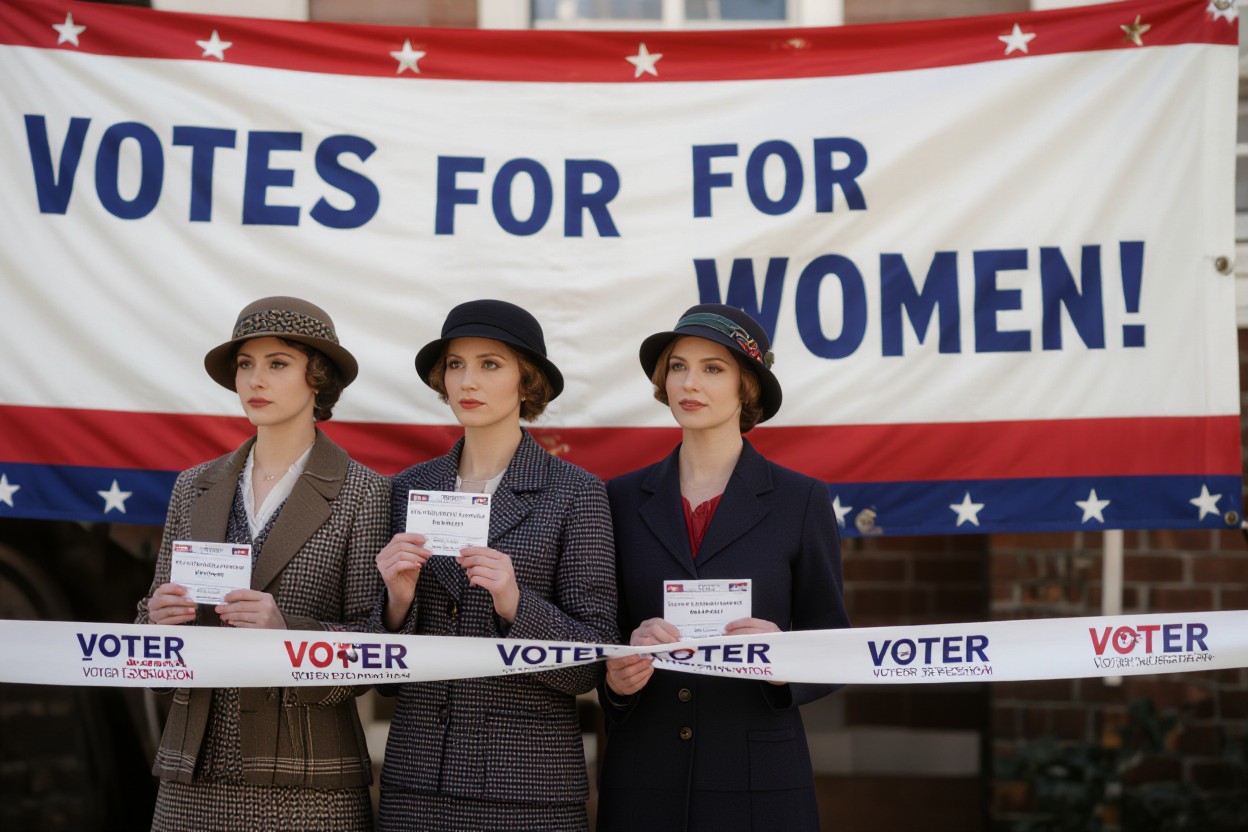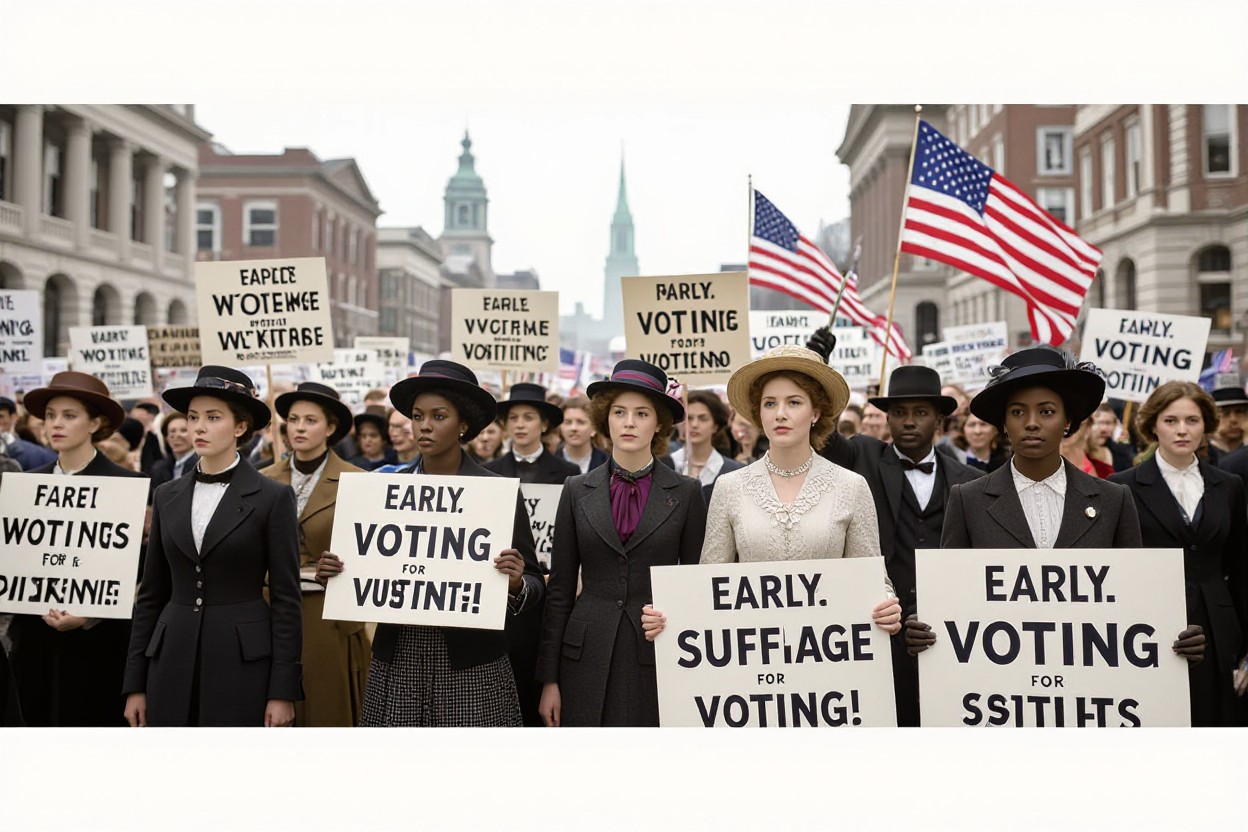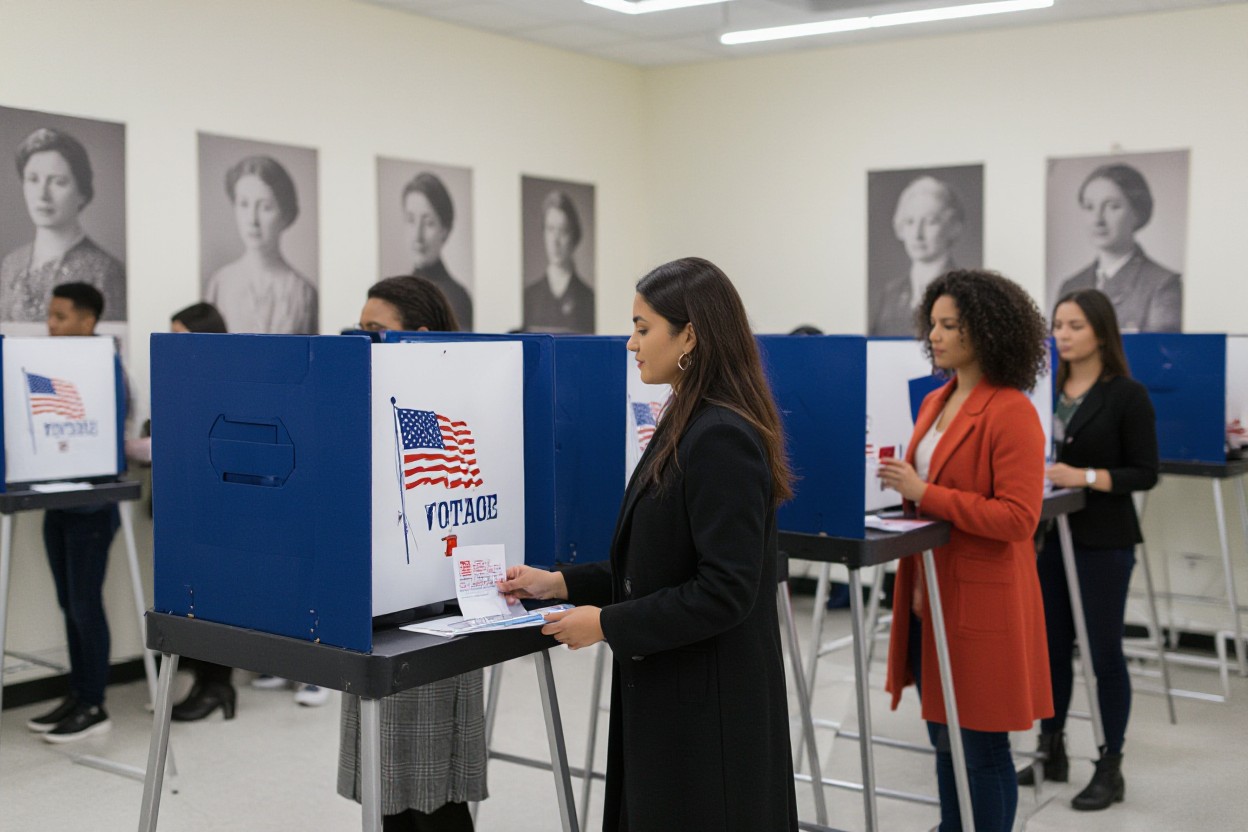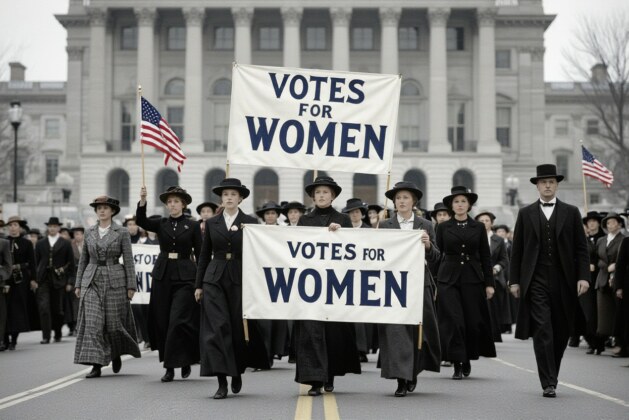Vote is a powerful tool that shapes democracy, and understanding when women earned this right in the US helps you appreciate the long, challenging fight they endured. I will guide you through the historic journey leading to the ratification of the 19th Amendment in 1920, marking a significant victory for women’s equality. This milestone was not just a political change but a profound shift in society, inspiring future generations to continue advancing civil rights. Join me as we explore this pivotal moment that redefined your right to participate in the nation’s future.
The Seeds of Change: Early Advocacy and the Women’s Suffrage Movement
The journey toward women’s voting rights in the US began long before the 19th Amendment, with passionate advocates sparking that initial momentum. I find it fascinating how the movement started in the mid-19th century, rooted in broader calls for social reform and equality. Women like Lucretia Mott and Elizabeth Cady Stanton organized the 1848 Seneca Falls Convention, setting the stage for decades of activism. This early advocacy laid a foundation built on resilience, challenging the status quo and mobilizing allies to push for suffrage as an important step toward full citizenship.
Key Figures in the Fight for Voting Rights
Leaders such as Susan B. Anthony and Elizabeth Cady Stanton became synonymous with the suffrage movement, their relentless campaigning shaping the national conversation around women’s rights. You’ll see that Anthony’s strategic lobbying and Stanton’s prolific writing created a powerful tandem, complemented by figures like Sojourner Truth, whose compelling speeches linked suffrage with abolition and civil rights. These activists endured arrests and public scorn, but their unwavering commitment helped transform voting rights from a fringe issue into a mass reform movement.
Landmark Events Leading to the 19th Amendment
The path to the 19th Amendment features pivotal moments such as the formation of the National Woman Suffrage Association in 1869 and the dramatic protests led by suffragists in front of the White House during Woodrow Wilson’s presidency. States like Wyoming and Colorado granting women voting rights acted as important precedents, demonstrating growing acceptance. These events steadily broke down opposition and expanded public support, setting in motion the final push that culminated in congressional approval and ratification by the states in 1920.
Expanding on these turning points, the 1913 Woman Suffrage Procession in Washington, D.C., marked a strategic shift by showcasing mass participation and disciplined activism that captured national attention. The suffragists’ picketing of the White House from 1917 to 1919, including hunger strikes, drew both sympathy and controversy, pressuring President Wilson and Congress. Meanwhile, victories in western states created momentum that underscored women’s capacity as informed voters. Each example illustrates how diverse tactics—public demonstrations, legal challenges, and grassroots organization—intertwined to dismantle entrenched barriers, ultimately securing the vote for millions of American women.

The 19th Amendment: Triumph Against Resistance
The ratification of the 19th Amendment in 1920 marked a momentous victory for women, finally granting them the right to vote nationwide. Despite decades of relentless activism, suffragists faced severe opposition from politicians, media, and social conservatives. This amendment was not merely a legal change but a symbol of broader societal shifts, affirming women’s role as equal participants in democracy. It paved the way for greater political representation and signaled a turning point in the fight for gender equality in the United States.
Legislative Journey to Ratification
Passing the 19th Amendment required overcoming numerous legislative hurdles. Introduced in Congress multiple times since the 1870s, it finally gained traction during World War I, when women’s contributions to the war effort bolstered their cause. In 1919, Congress passed the amendment, and after intense campaigns, the required 36 states ratified it by August 1920. Tennessee’s final vote by a single vote underscored the razor-thin margin that decided a historic change.
Societal Repercussions and Media Response
Once ratified, the 19th Amendment ignited widespread societal debate. Media outlets both celebrated and criticized the change, reflecting polarized views. While many newspapers heralded it as a triumph of democracy, others warned it threatened traditional gender norms. In urban centers, women eagerly registered to vote, but in many rural and Southern areas, social resistance and discriminatory practices delayed their political participation.
The media’s portrayal significantly influenced public perception. For example, the New York Times ran editorials praising women’s suffrage as a testament to progressive democracy, whereas some conservative papers questioned women’s preparedness for voting. This dichotomy shaped early voting behaviors and illustrated how societal acceptance was as contested as the legislative battle itself. Additionally, the amendment’s passage catalyzed various organizations to elevate female political engagement, setting in motion a gradual transformation of American political culture.

Unfinished Business: Intersectionality in Voting Rights
The 19th Amendment’s ratification was a watershed moment, but it didn’t eliminate all voting barriers for women, especially for women of color. As I examine this period, I recognize how race and gender intersected to shape disenfranchisement. Minority women faced compounded obstacles, often excluded by laws that circumvented the Amendment’s promises. The struggle for voting rights extended well beyond 1920, highlighting how the suffrage movement’s victory was just the beginning of a broader fight for equality and inclusion in the democratic process.
The Struggles of Minority Women Post-1920
After the 19th Amendment, many women of color, particularly Black, Native American, and Asian American women, remained largely disenfranchised due to state and local restrictions. Poll taxes, literacy tests, and intimidation tactics effectively denied them the vote. For example, Black women in the South often faced violent suppression, and Native American women weren’t recognized as citizens until 1924, further limiting their voting rights despite the constitutional change.
Continued Barriers to Voting Access
Even after legal protections expanded, hurdles like voter ID laws, limited polling locations, and purges of voter rolls disproportionately impacted minority women. These barriers persistently curtailed full participation, demonstrating that legal rights do not always translate into practical access. Your awareness of these structural impediments helps explain why voting equity remains a contemporary challenge.
Expanding on these obstacles, the implementation of restrictive policies such as voter ID laws—introduced in various states since the 2000s—has had a measurable impact on turnout among minority women. Studies reveal that these laws can reduce participation by as much as 2-3 percentage points in affected communities. Additionally, gerrymandering and early closure of polling stations in minority neighborhoods compound difficulties, making it harder for minority women to vote. Efforts to combat these challenges through litigation and advocacy continue, signifying that the fight for voting rights has evolved but is far from over.

Legacy of Women’s Suffrage: Shaping Modern Politics
The ratification of the 19th Amendment in 1920 initiated a profound shift in American politics, expanding democratic participation and altering policy priorities. The influx of women voters compelled politicians to address issues such as education, healthcare, and labor rights more seriously. Women’s suffrage broadened political representation and laid a foundation for ongoing advocacy against systemic inequalities. This milestone didn’t just grant voting rights; it transformed civic engagement, inspiring generations to challenge barriers and demand more inclusive governance structures nationwide.
Impact on Future Generations of Female Voters
The enfranchisement of women created a ripple effect, motivating successive generations to assert their voices at the ballot box. Today, female voter turnout frequently surpasses that of men, exemplified by the 2018 midterms, where women accounted for nearly 57% of voters. This increased participation has propelled issues like reproductive rights and equal pay into national conversations, demonstrating how the initial victory of suffrage continues to empower women to influence policies that directly affect their lives and communities.
Ongoing Movements for Electoral Equity
Despite the progress from the women’s suffrage victory, challenges persist in achieving full electoral equity. Movements addressing voter suppression, gerrymandering, and unequal access to voting resources remain active, emphasizing that enfranchisement must be continuously defended. Efforts like the Voting Rights Advancement Act seek to restore protections weakened over recent decades, ensuring that all citizens, especially marginalized groups, can participate freely and fairly in elections.
Advocacy groups such as the League of Women Voters and newly formed coalitions have intensified campaigns against laws that disproportionately impact minority and low-income voters, especially women of color. Initiatives to expand early voting, combat strict ID requirements, and improve voter registration highlight the multifaceted work required to uphold electoral equity. The legacy of women’s suffrage extends beyond the 19th Amendment—it fuels ongoing fights to make the democratic process accessible to everyone.
The Global Ripple Effect: Women’s Voting Rights Worldwide
While the US suffrage victory was groundbreaking, it also served as a catalyst for women’s voting rights around the world. Countries like New Zealand, Australia, and Finland had already extended suffrage to women before 1920, but America’s ratification energized numerous international movements. Activists in nations such as the UK and Canada drew inspiration, intensifying campaigns that eventually led to expanded voting rights. The US example demonstrated the tangible power of enfranchisement, encouraging a domino effect of reforms across continents throughout the 20th century.
Comparisons with International Suffrage Movements
| Country | Year Women Gained Voting Rights |
|---|---|
| New Zealand | 1893 |
| Finland | 1906 |
| United States | 1920 (19th Amendment) |
| United Kingdom | 1918 (partial), 1928 (equal) |
| Canada | 1917 (wide), 1960 (Indigenous women) |
Looking across nations, voting rights for women were granted in varying stages and timelines, often reflecting each country’s political and cultural landscape. For example, New Zealand pioneered full suffrage in 1893, while the UK’s partial enfranchisement in 1918 was followed by equal suffrage in 1928. The US fell in the middle of this spectrum, with the 19th Amendment establishing a standard many found inspirational.
Lessons Learned for Contemporary Activism
Understanding how past suffrage movements overcame opposition helps shape modern advocacy strategies. The use of persistent grassroots organizing, strategic alliances, and media campaigns proved effective back then and remains relevant now. Campaigners like Susan B. Anthony harnessed legal challenges alongside public education to shift public opinion and policy. Today, activists can harness these historic tactics while leveraging digital platforms to accelerate change worldwide.
Activists today benefit from the example of suffragists who combined several approaches: staging demonstrations, petitioning lawmakers, and engaging the public through literature and speeches. For instance, the suffragists’ emphasis on coalition-building across social groups provided a blueprint for inclusive, broad-based movements. Repeating these methods in contemporary contexts—while integrating technology and global connectivity—can enhance the impact and reach of campaigns for equal rights or social reforms.
Summing up
Presently, I reflect on how the right to vote for women in the US, achieved with the ratification of the 19th Amendment in 1920, stands as a landmark in our democratic journey. I encourage you to appreciate the sacrifices and persistent efforts that paved the way for gender equality in voting rights. This milestone not only changed the political landscape but also empowered generations of women to actively participate in shaping the nation’s future. Understanding this history strengthens our commitment to defending and exercising our rights today.





Leave a comment